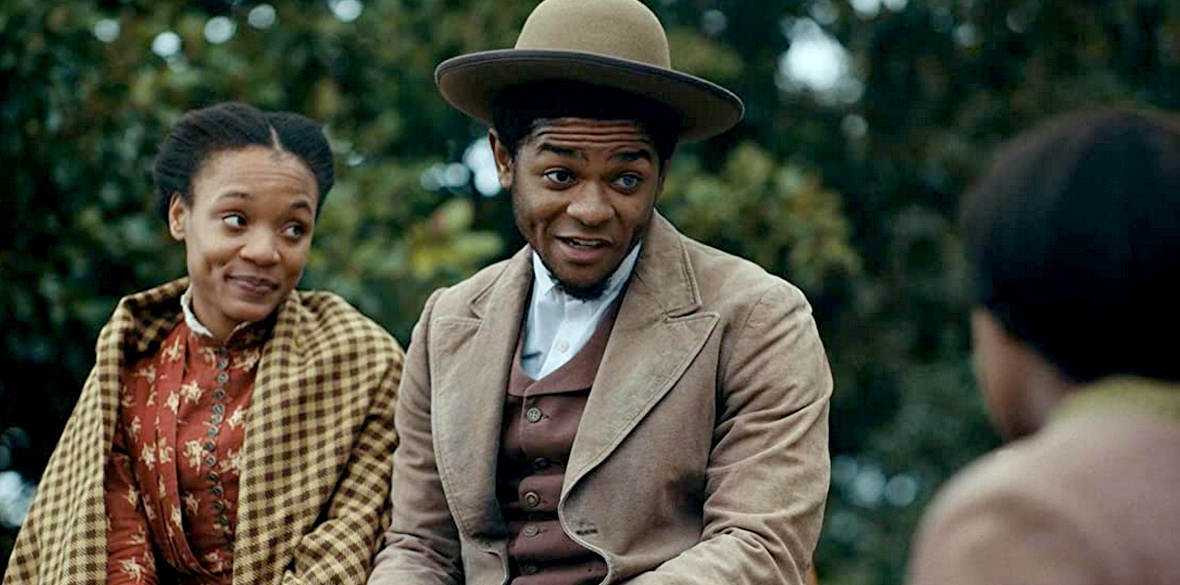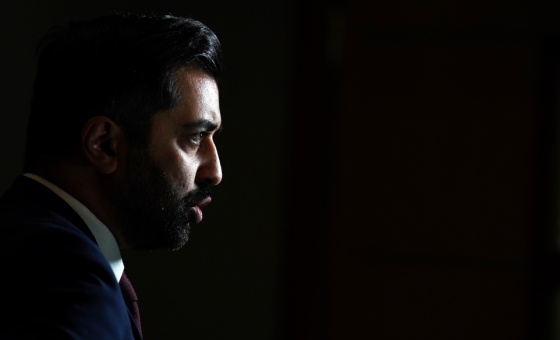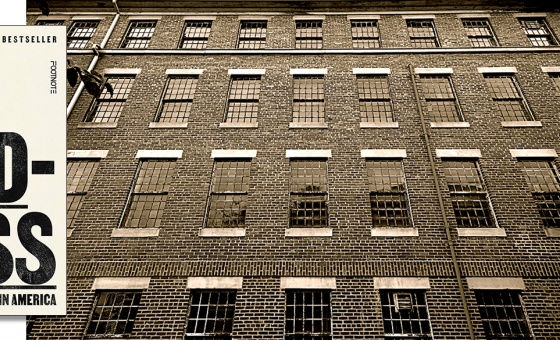This is the last article you can read this month
You can read more article this month
You can read more articles this month
Sorry your limit is up for this month
Reset on:
Please help support the Morning Star by subscribing here
“YOU are standing on a train platform, in fear of missing the train from slavery to time. There is so much you have never said ... and so little time to articulate.”
So speaks the male voice-over as the enslaved Cora (Thuso Mbedo) struggles to tell her truths about the horrifying and traumatic experiences of slavery in Barry Jenkins’s brilliantly raw and stark adaptation of Coalson Whitehead’s novel The Underground Railroad.
The opening episode in the Amazon Prime series sees Cora and Caesar (Aaron Pierce) escape the Randall Plantation in Georgia and its slaveholding owner, Terence Randall, whose callous brutality towards his enslaved labourers is evident from the outset. Jenkins pulls no punches in his graphic depictions of the gratuitous violence meted out by Randall for the slightest infraction.
A returned runaway is set alight and publicly burned to death in the opening episode, tough to watch but it communicates the barbarity of the system and the origins of the systematic racism that continues to bedevil the US.
At a time when shows about slavery and the black experience are being critiqued for gratuitous violence, Jenkins has been able to avoid this critique.
It might be because violence here has a point. Yes, it is brutal. But it voices the silenced histories and yet-to-be told stories of black America and it is also tempered by horrific and brutal scenes, both physical and emotional, which are often placed alongside scenes of poignant profundity and heartbreaking tenderness.
Capturing the visual contrasts between slavery and so-called freedom is beautifully communicated by Jenkins, as when local slaveholders gather on Randall’s lawn and smirk as an enslaved boy is forced to stutter through a recollection of Thomas Jefferson’s Declaration of Independence, the founding document of the American Revolution.
Of course, the irony is lost on them. Jenkins, here and elsewhere, powerfully captures the absurd, yet complex and complicated origins of white supremacy in Jefferson’s America.
Further on into quasi-freedom, the landscapes change. Black and white mingle in their finery on the urban streets of Griffin, South Carolina, complete with skyscrapers, schools and museum exhibits ostensibly documenting the “progress” of the African race. Cora, leaving behind her drab work clothes, is dressed in the most beautiful yellow ballgown. Caesar looks dashing in his suit.
Yet, cut to further up the freedom road in North Carolina and Cora is back in rags, scared and desperate. These scenes are dark, eerily and ominously so. Trees with “strange fruit” of black and white bodies line the entrance to town — black people hung for the crime of their colour in a racially pure state, white townsfolk hung for harbouring fugitives from slavery.
The Underground Railroad supposedly symbolised a journey to freedom, from the slave south to the free north. Yet, as Cora moves further north, she finds, as was historically so, that racism has only changed its form, not its substance. As Cora reflects, perhaps there are no places to escape to, only places to run to.
The horrific secrets of Griffin in South Carolina and the white supremacist town in North Carolina are part of a much longer history of racial tyranny in the US and Jenkins hauntingly replicates visually what Whitehead achieved so movingly through his novel: that these harrowing histories of racial terrorism that we associate with slavery have a brutal and vicious afterlife.
The afterlife of the plantation is as relevant today in the 21st century as it was during the early formation of the US. Jenkins pointedly articulates this with his eclectic and jarring, but always relevant, choice of music to accompany the closing credits. From Groove Theory’s Hey You to Donald Glover’s This Is America, the linking of the stories of the past to the present is made not just visually but orally and aurally too.
Yet what is most unnerving is the quietness of it all. The last episode, focusing on Cora’s mother, has almost no dialogue, just the relentless hum of the crickets against the backdrop of rural Georgia. We hear the clanging of the plantation bell to call enslaved labourers to work, the crack of the slaveholder’s whip to punish, the continuous ticking of the clock as the enslaved endure unimaginable fates.
It is these sounds, those of the everydayness of slavery, that are so often forgotten when we think about the lives of those in the past, how they negotiated their existence in a system in which they were legally property.
They resisted that system, in all of its brutalities against the body and mind. Yet often that resistance was accompanied by hopelessness and despair and these are the very realities that Jenkins brings to his audience with a haunting and compelling clarity.
In one episode, Cora restlessly dreams about a railway station. She cannot board the train as she hasn’t given her truths, her stories or her testimony and we see in this dream countless other black men and women, all waiting at the station with stories to be told, all as witnesses to unspeakable traumas.
It is here that Cora dreams of having her last dance with Caesar, murdered by a lynch mob in Griffin. “How long we got?” she asks. “As long as you need,” he replies. Through such moments, Jenkins asks the audience to understand the lifetimes of trauma these people have lived and the necessity of time to retell them.
Rebecca Fraser is Senior Lecturer in American Studies, University of East Anglia. This is an edited version of a review that first appeared in The Conversation, theconversation.com









